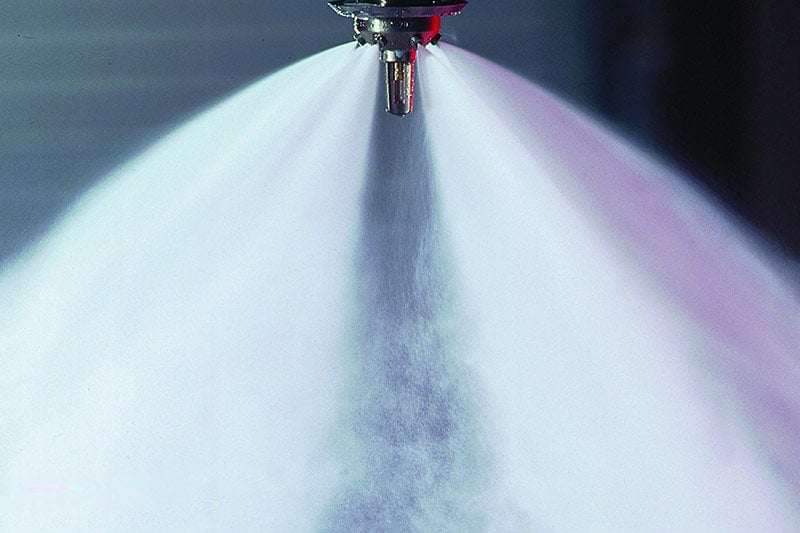WOBO thanks IFSEC Global for the link to Jade Musto’s article on water mist systems.

Jade Musto, Head of Suppression System Testing at the Fire Protection Association (FPA), provides some clarity on the benefits of water mist systems and explains why it is crucial that those being specified and installed by fire safety professionals are third-party certified.
Water mist systems can play a critical role in preventing the spread of fire and are highly effective if used correctly. As the name suggests, the systems work by spraying small droplets of water, which is done at relatively high pressure. These systems work by lowering the temperature and reducing the oxygen concentration to the extent that combustion can no longer be maintained, and the flame is extinguished.
Because water mist systems discharge less water than traditional sprinkler systems, they are typically used in residential or domestic premises, however they are becoming increasingly common in commercial buildings such as offices, schools and leisure facilities.
When it comes to maximum effectiveness, however, it is important that they are designed with the exact environment in mind and are tested prior to installation. For building owners and those responsible for fire safety within a building, seeking third-party testing is a critical step in ensuring the proper and safe use of water mist systems.
Water mist vs sprinkler systems
Water mist systems offer many benefits compared to standard sprinkler systems. For example, they do not rely on the larger water supplies needed to support sprinklers and use smaller pipes and components, so take up less space. This makes them an appealing fire protection method in environments where it would be difficult to accommodate a larger system, and this includes retrofits where installers need to be careful not to encroach on existing pipe networks.
As a lower volume of water is used to extinguish the fire using water mist systems, they are also likely to have a lesser impact on a building’s contents and be easier to clean up. This makes them a good fit for residential properties, where residents may be left without essential appliances or furniture, and face large costs in replacing them.
However, while water mist is particularly effective at supressing fires in buildings which are compartmentalised, it does not work well in highly ventilated spaces, as the droplets of water can be dispersed by factors such as air conditioning or open areas between floors.
Water mist systems: What to consider and why third-party testing is essential

